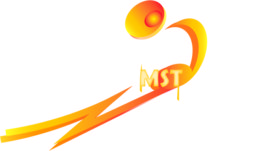Three broad types of visualization are useful for the athlete:
- Using visualization during the performance (for example, as part of a pre-shot routine in basketball free-throws, golf, or shooting).
- Using visualization outside of the sport arena- a form of off-line mental rehearsal.
- Use of visualization to define desired outcomes and external reactions to prime the sub-conscious for success.
in this post, the second category will be introduced.
Neuroscience has learned an incredible amount about the workings of the brain due to technologies such as functional magnetic resonance imaging (fMRI). Through the use of fMRI, we now know that certain areas of the brain are activated during performance of various functions. What is even more interesting, is that those same areas of the brain are activated even when the same function or activity is imagined or visualized.

Numerous studies have shown that simply visualizing an activity can help to develop the ability to actually perform the same task. For example, visualizing making basketball free throws off the court helps with the execution of the skill on the court! While it is no substitute for actual practice, off-line visualization certainly helps with performance in the real world.
Try this! Each night before drifting off to sleep, try shooting a round of sporting clays (or performing whatever your sport of choice is) in your mind’s eye. Make the practice as realistic as possible incorporating as many senses as you can. Feel the gun close as you load it. Hear the trap fire. Smell the aroma of the burning gun powder. Shoot in real time – no need for slow motion here! Be sure to hit every target. Some prefer to see the action as an observer would from behind the shooter, or in profile from the side. I prefer to see the action unfold exactly as I would experience it – from behind the gun. Imagine going thru the same pre-shot routine as you would at the course. If you don’t feel like you are seeing your imaginary world clearly, don’t be too concerned. Use whatever level of imaging that you can conjure up. The more you do it, the easier it will become and the more details you can incorporate.
Another side benefit of this type of visualization is it tends to make me very sleepy. I often will drift off to sleep after “shooting” a few stations. If I should wake up in the middle of the night, I just continue from where I left off and soon fall back asleep. Sleeping better, and shooting better… a win win situation for sure!
Give it a try and see how it works for you!
